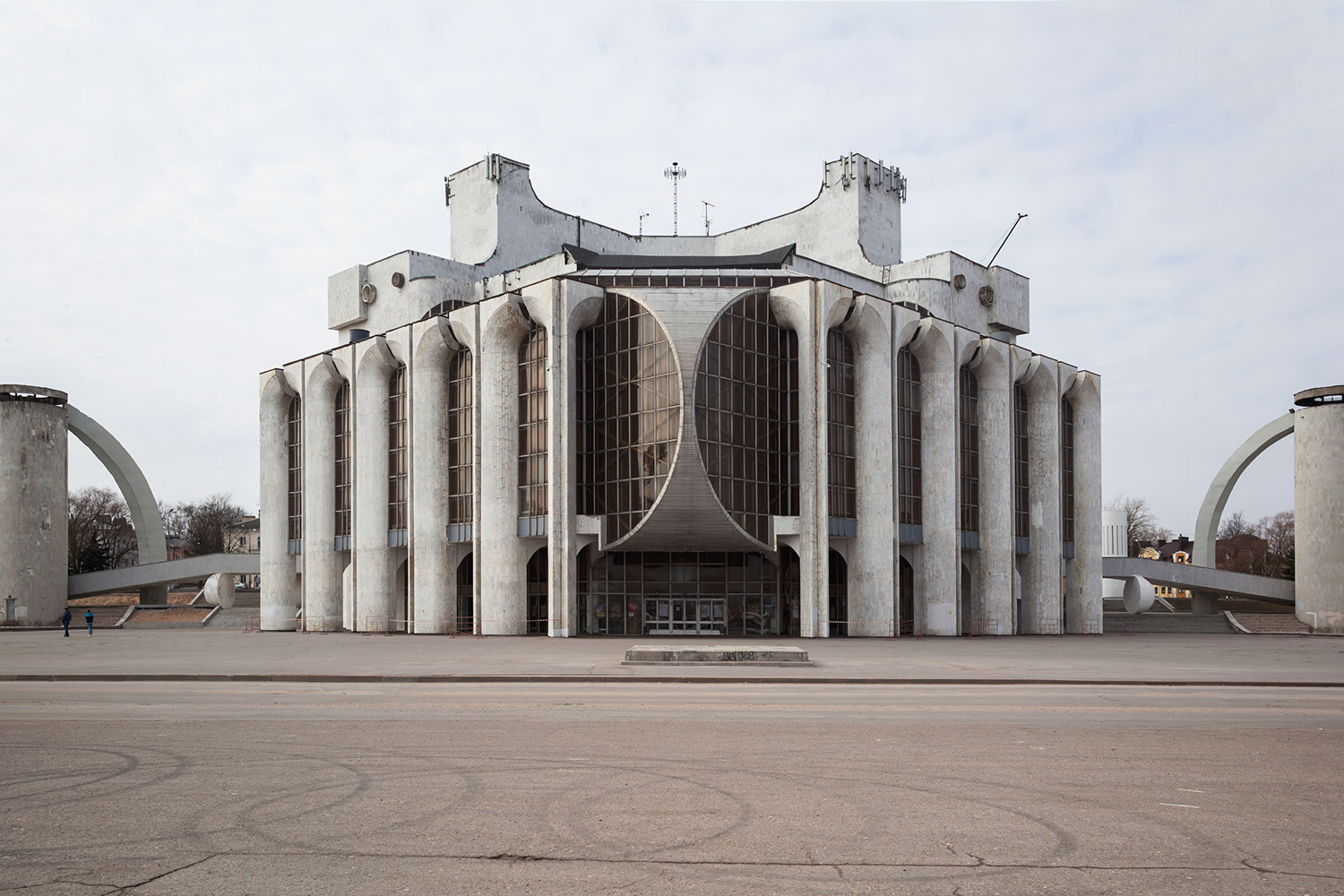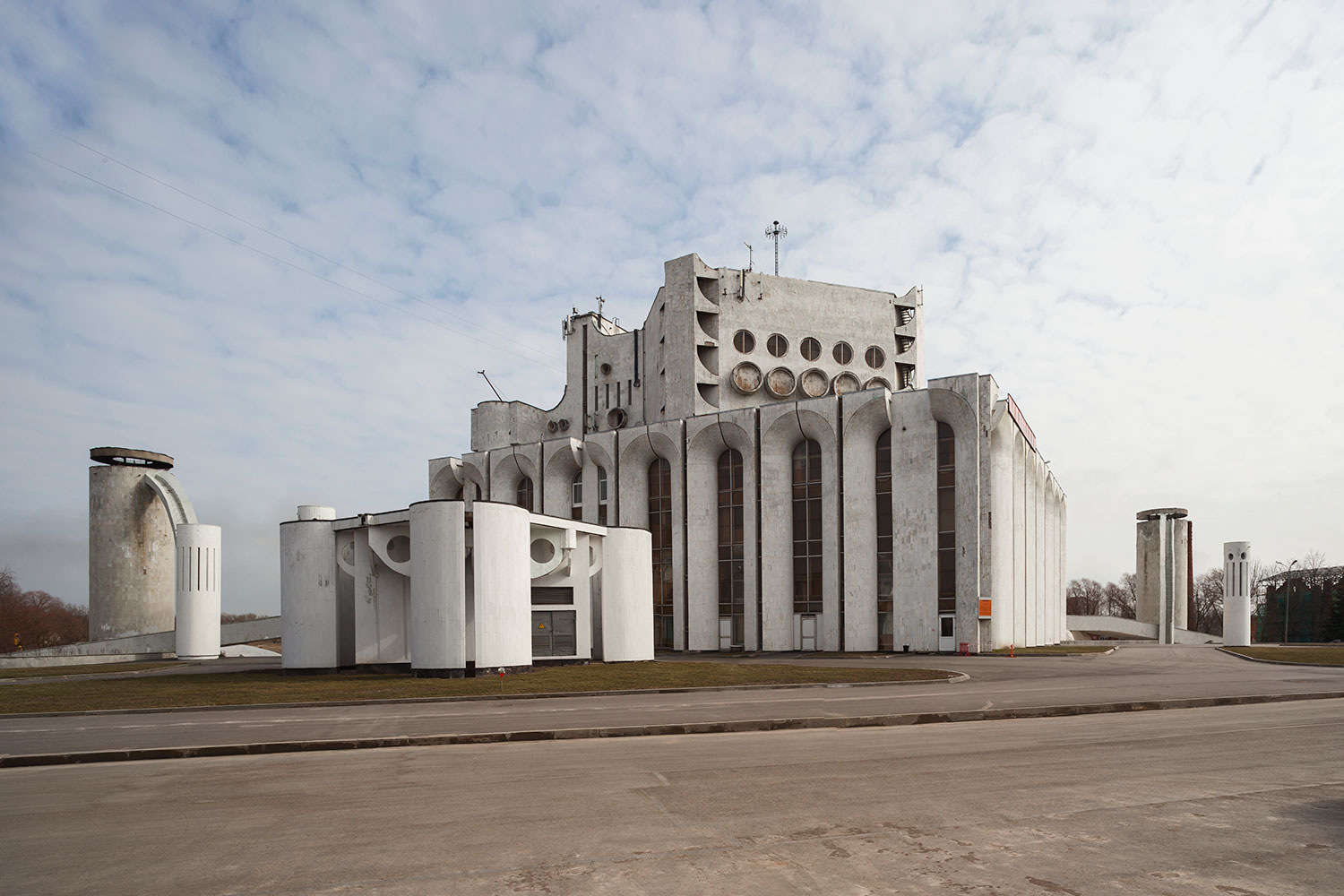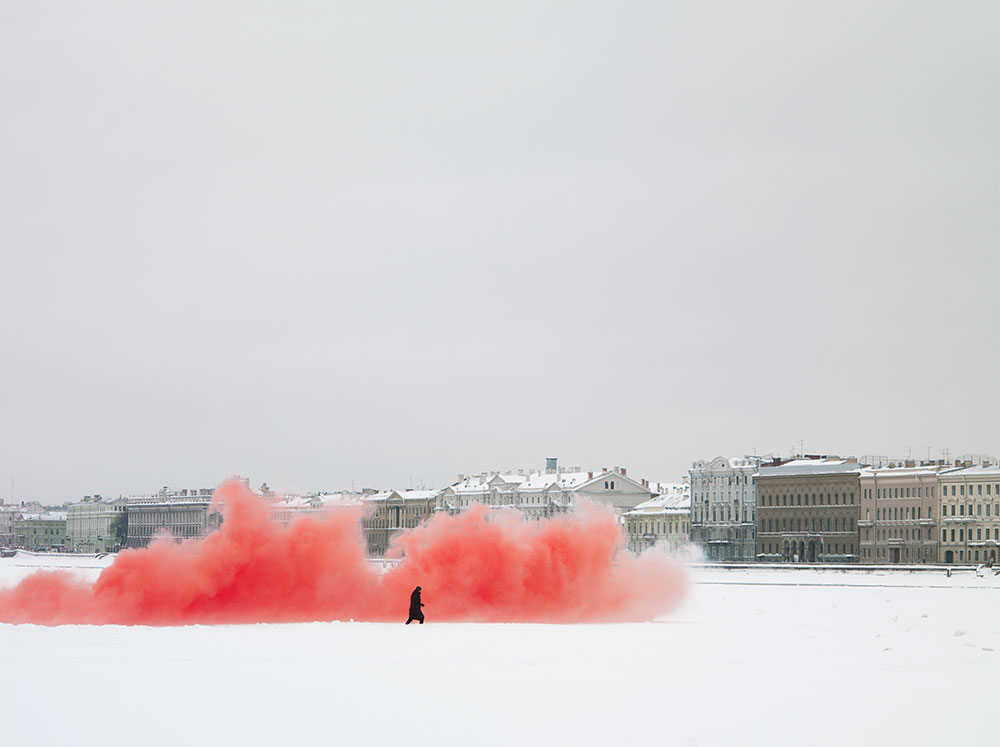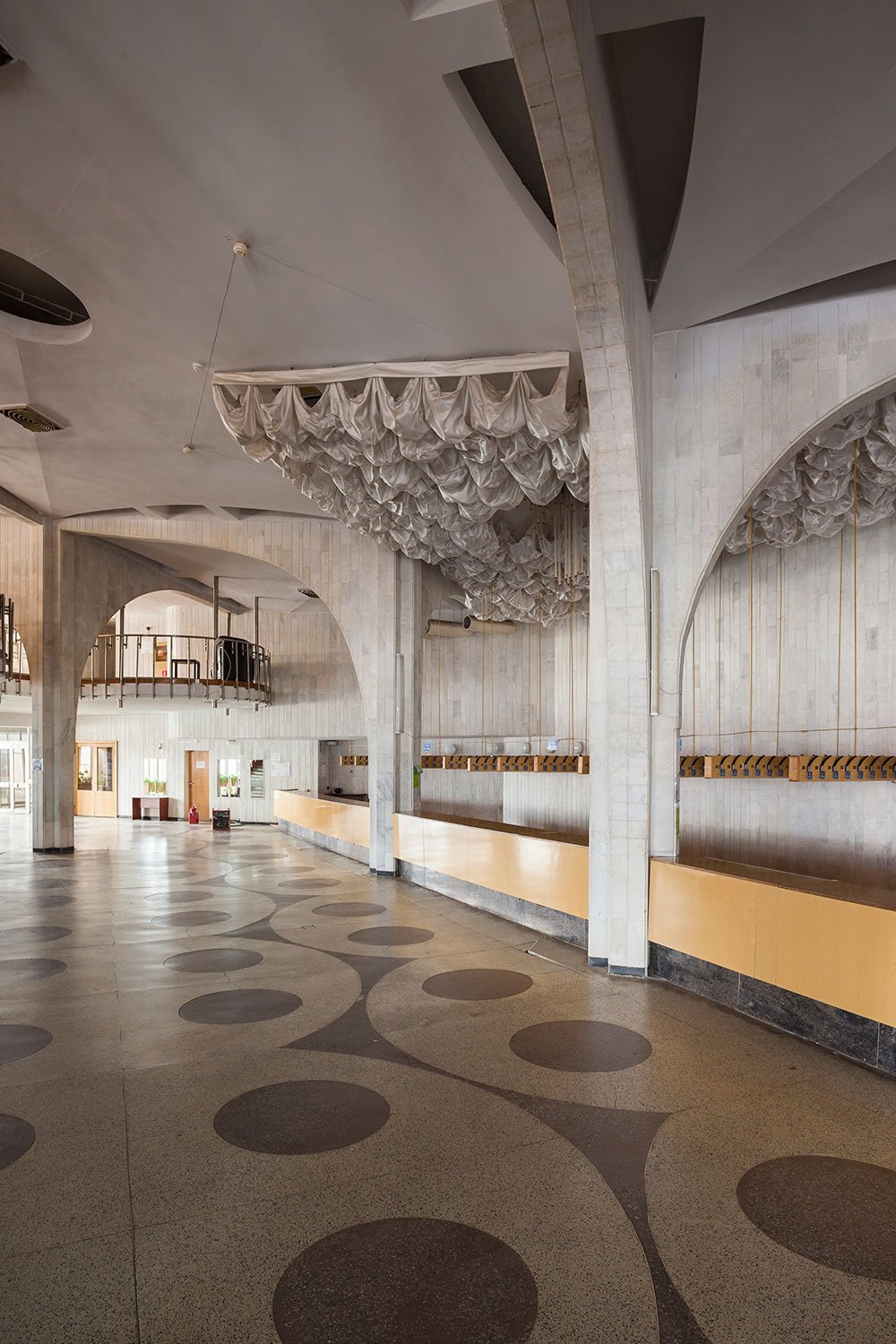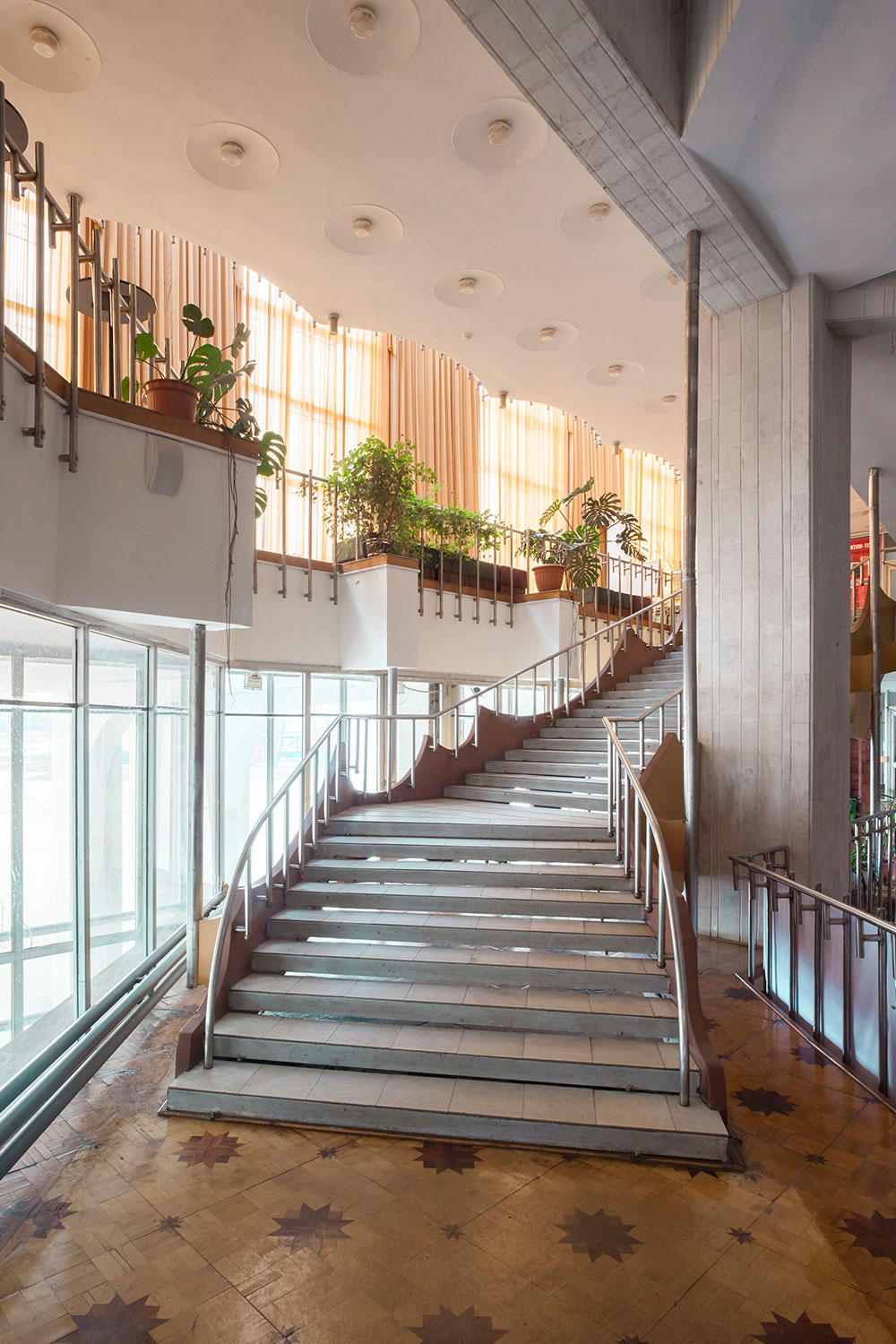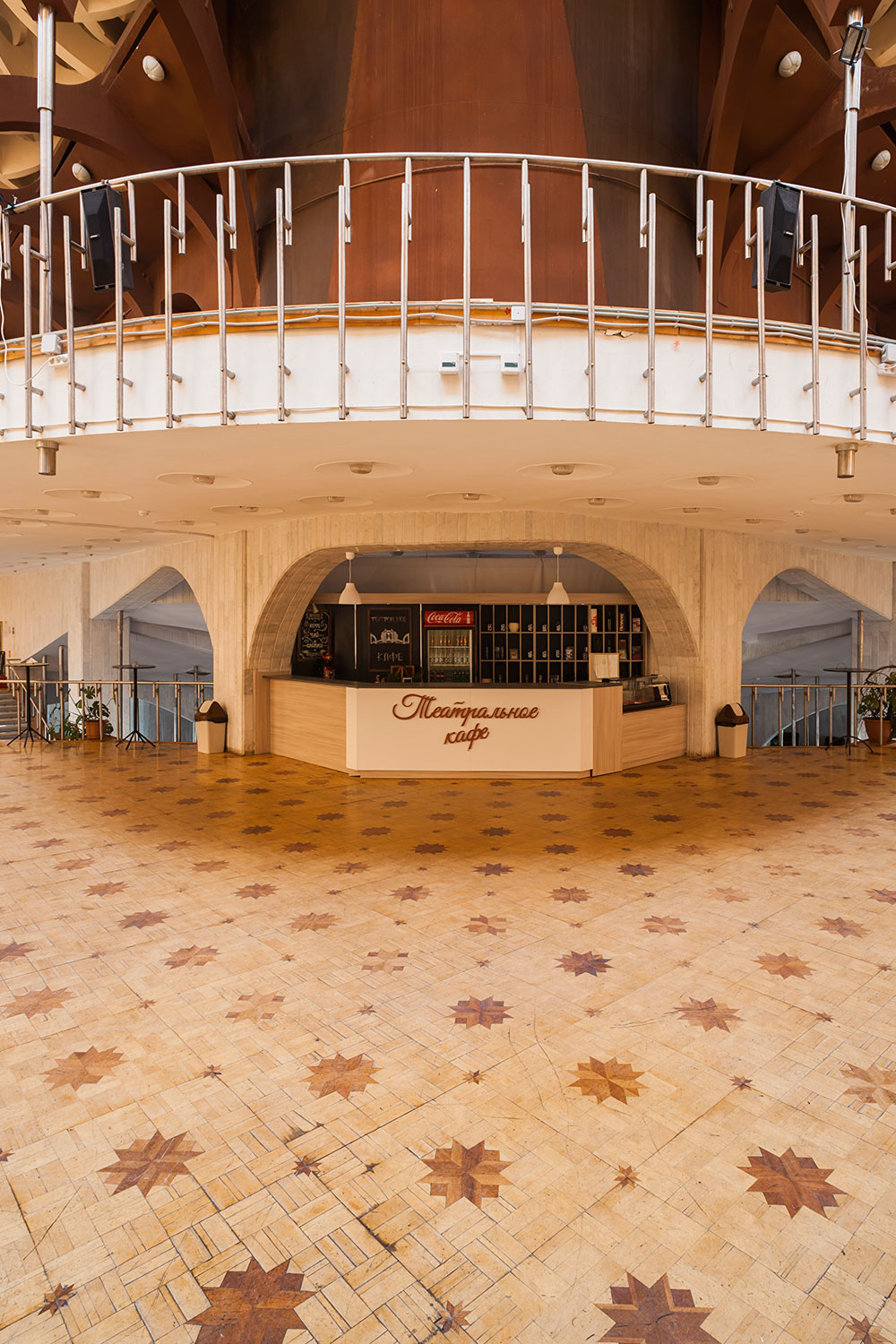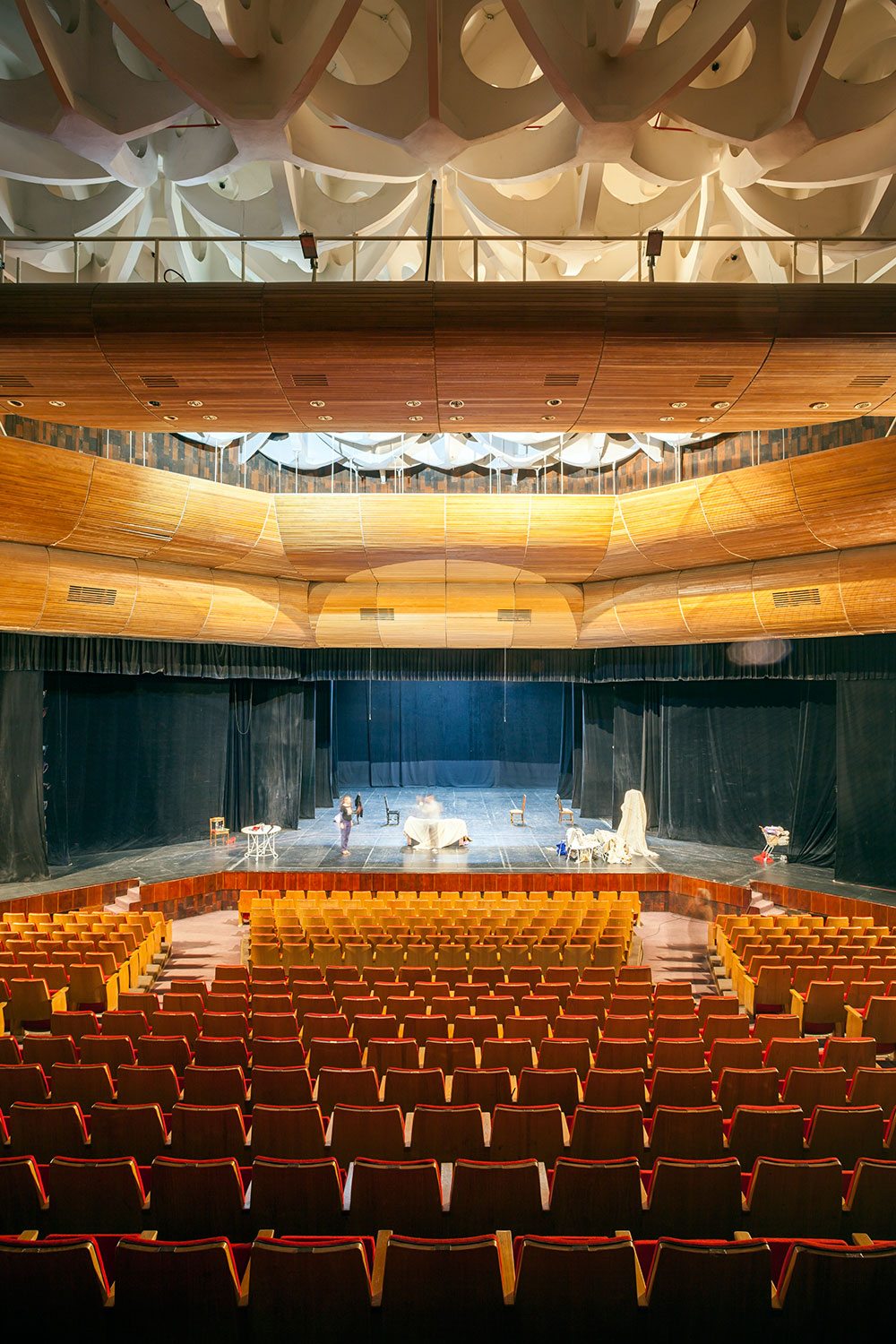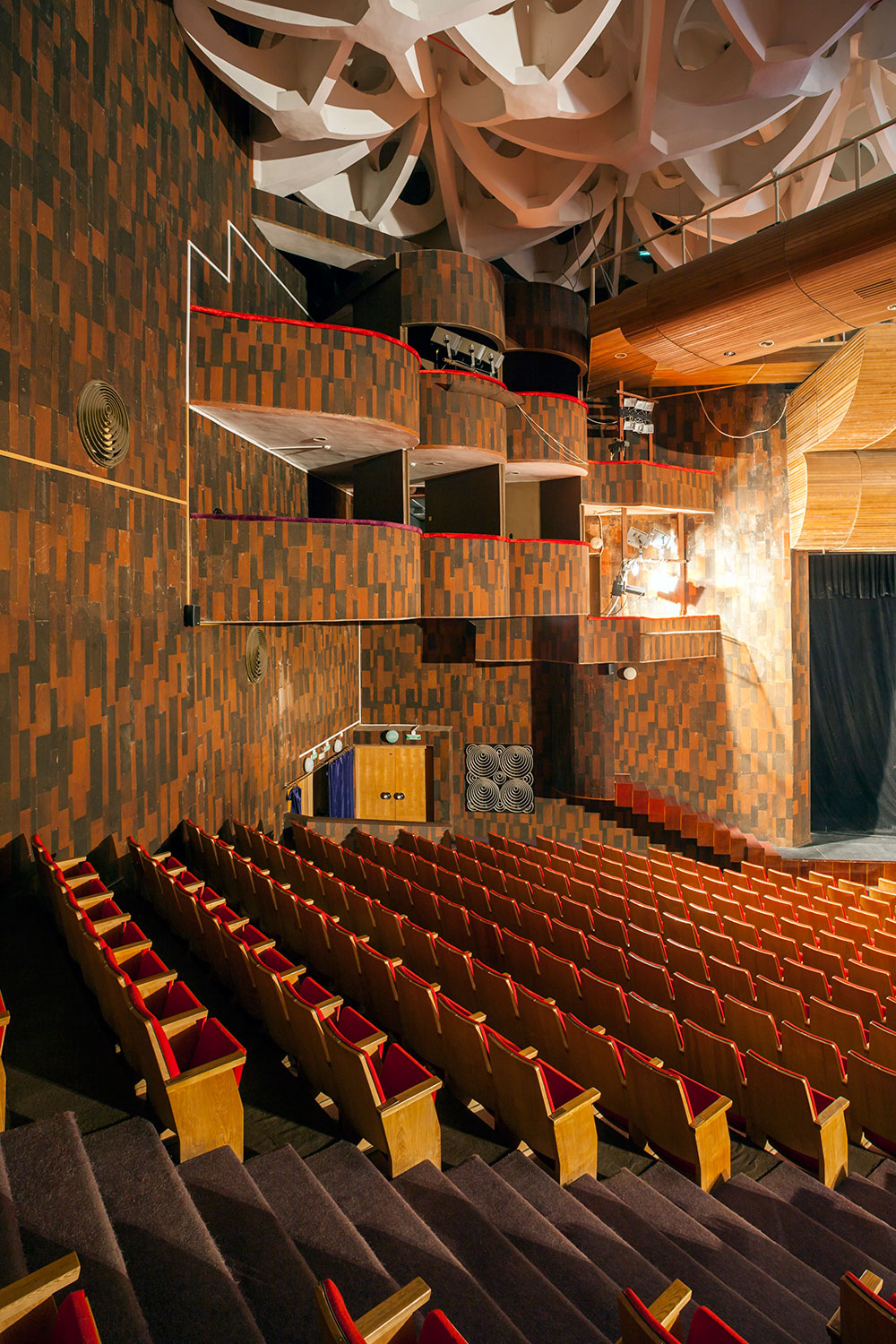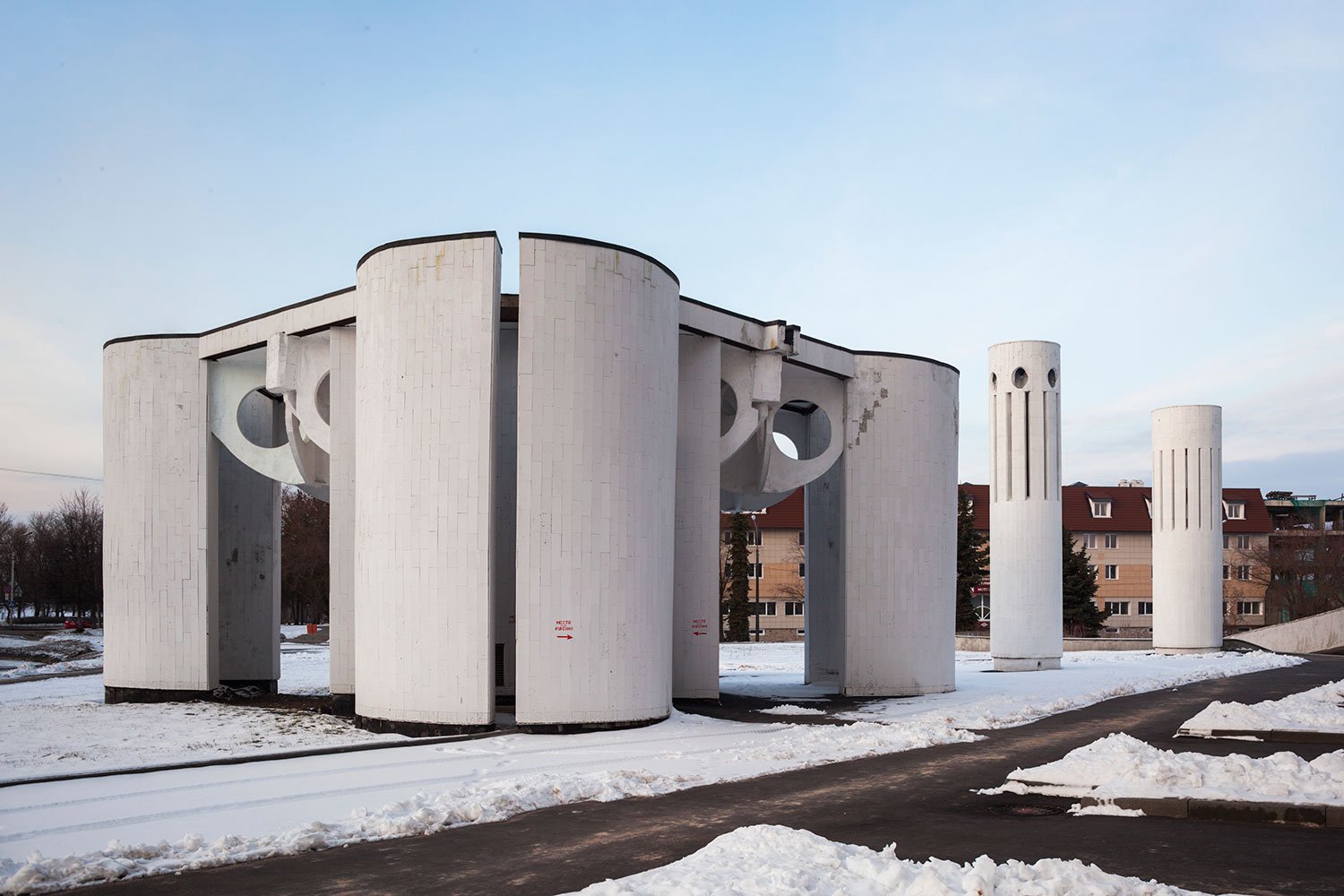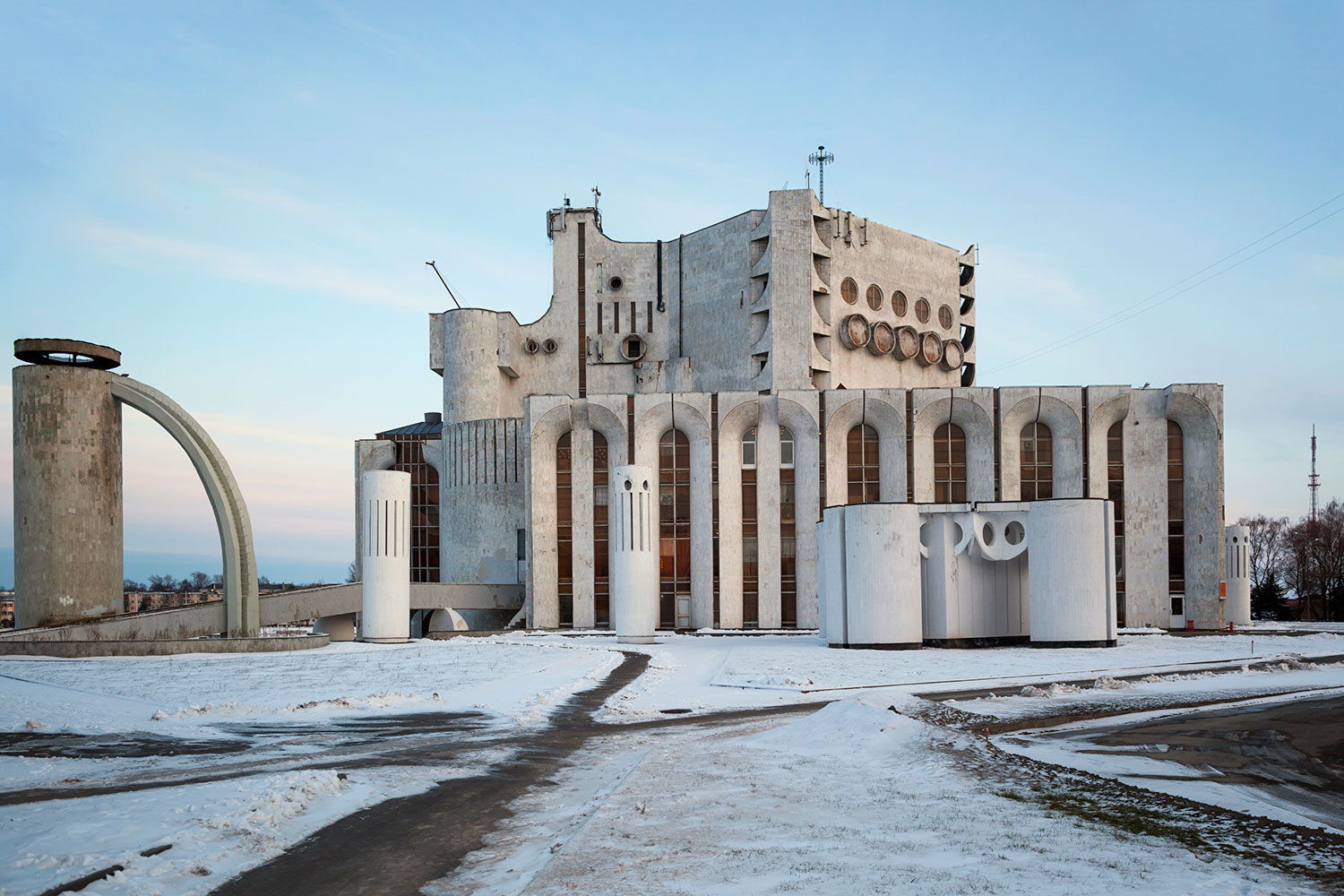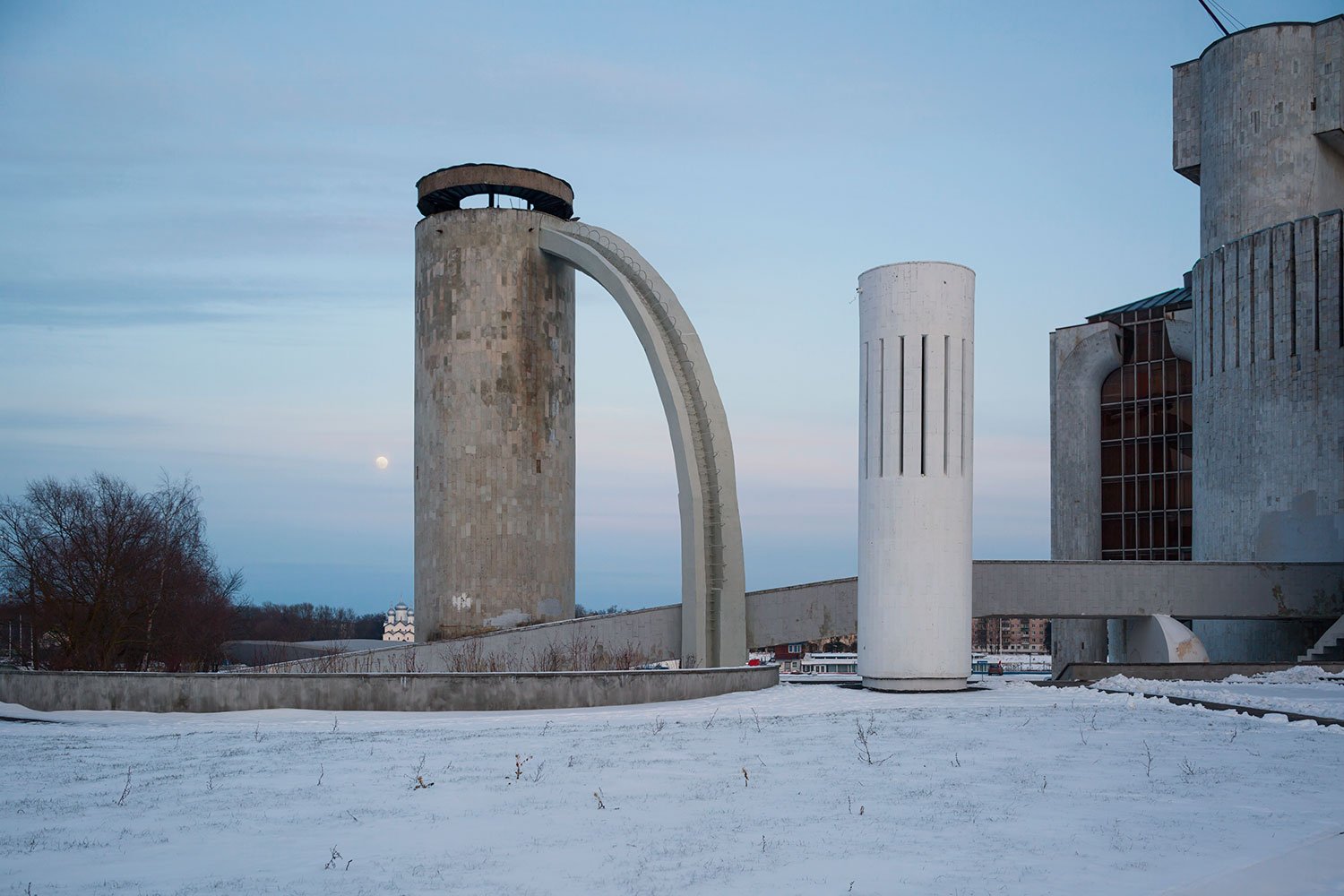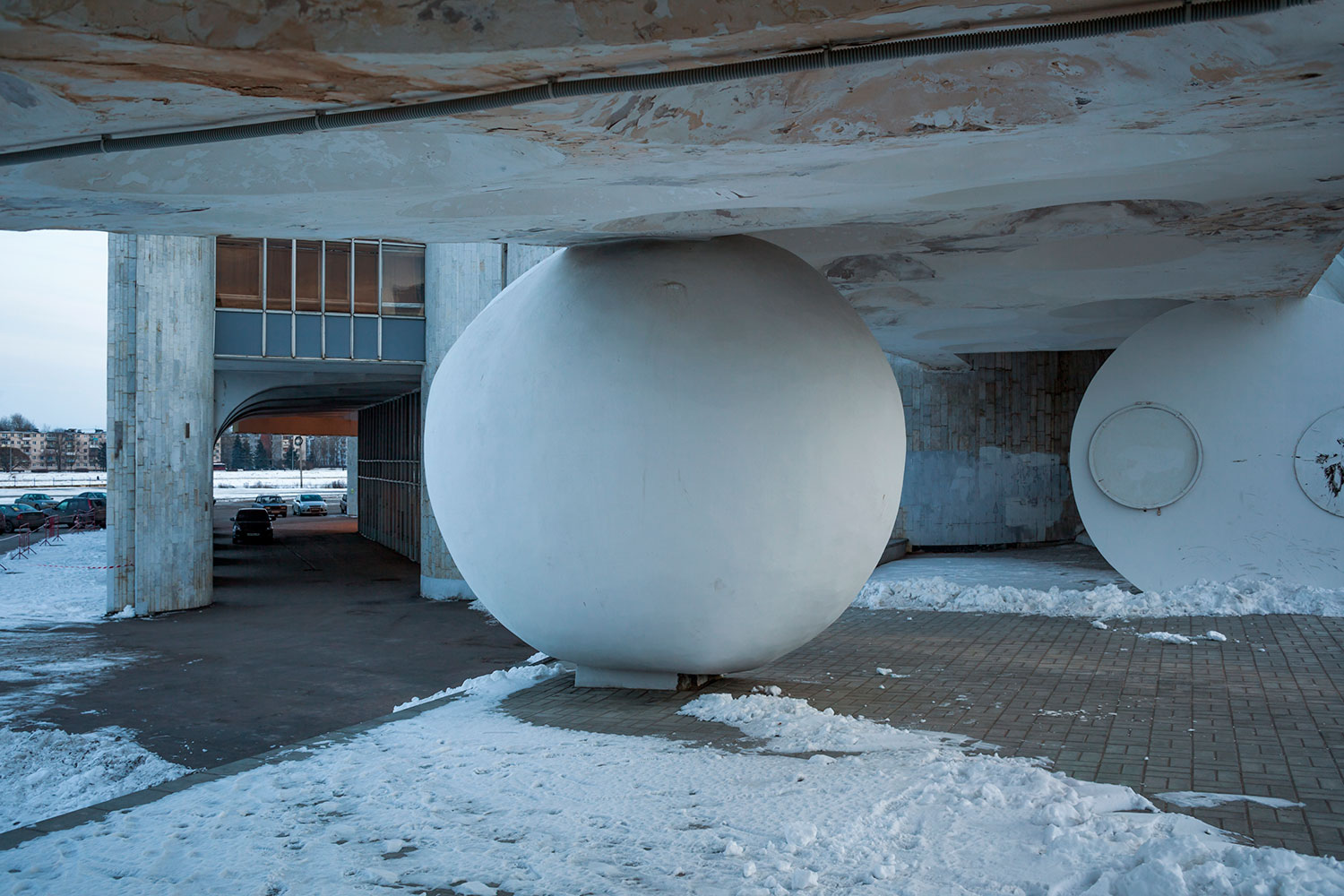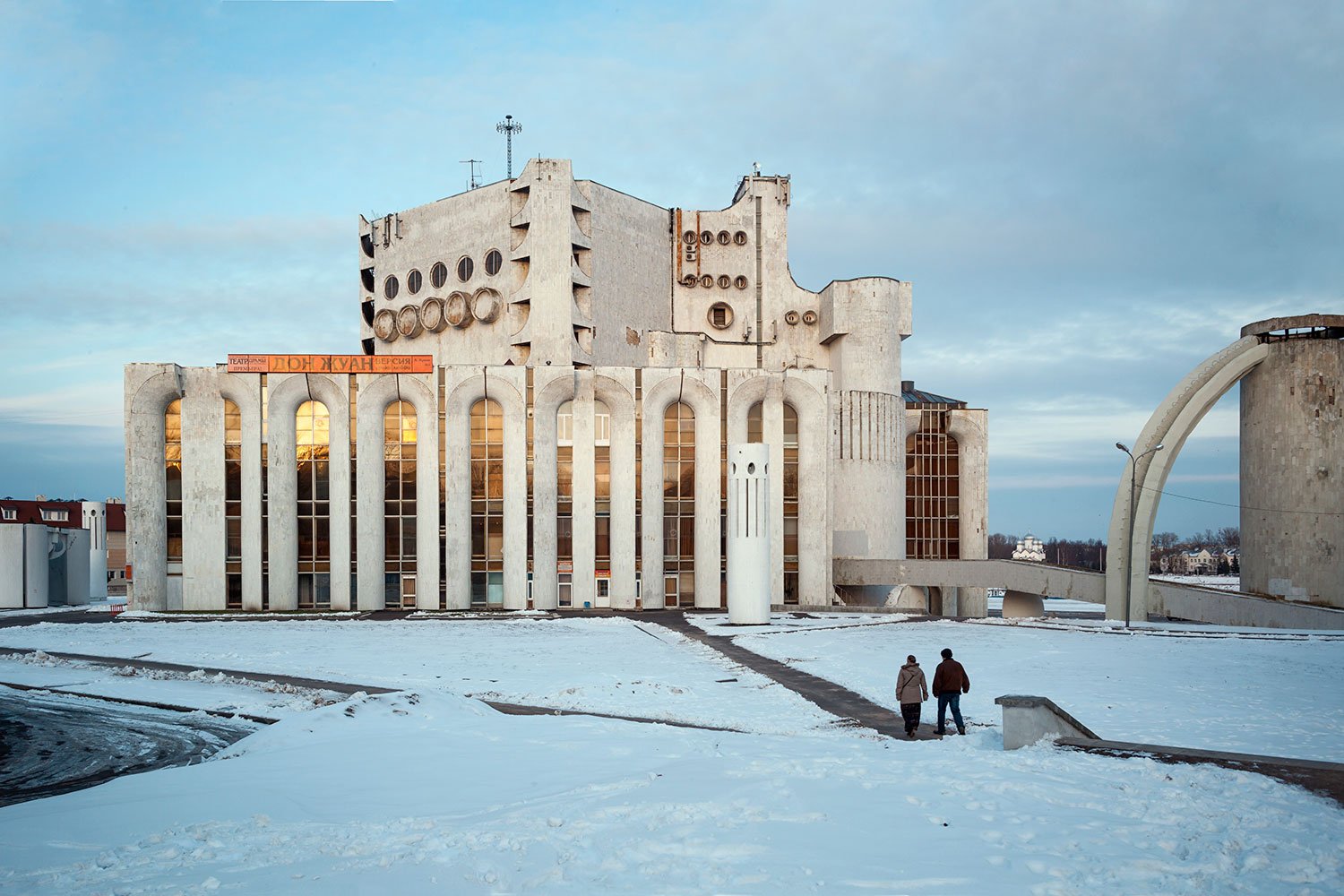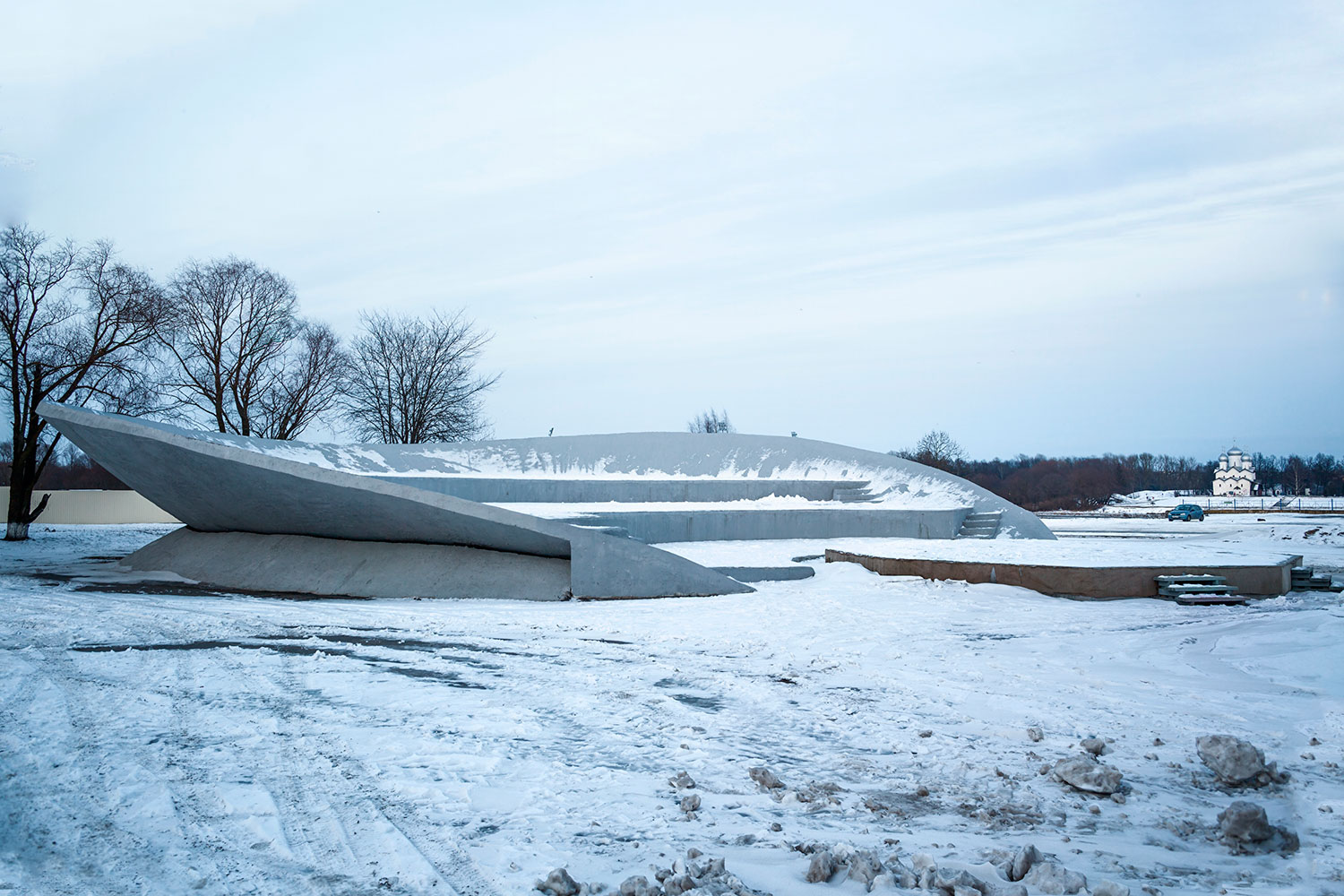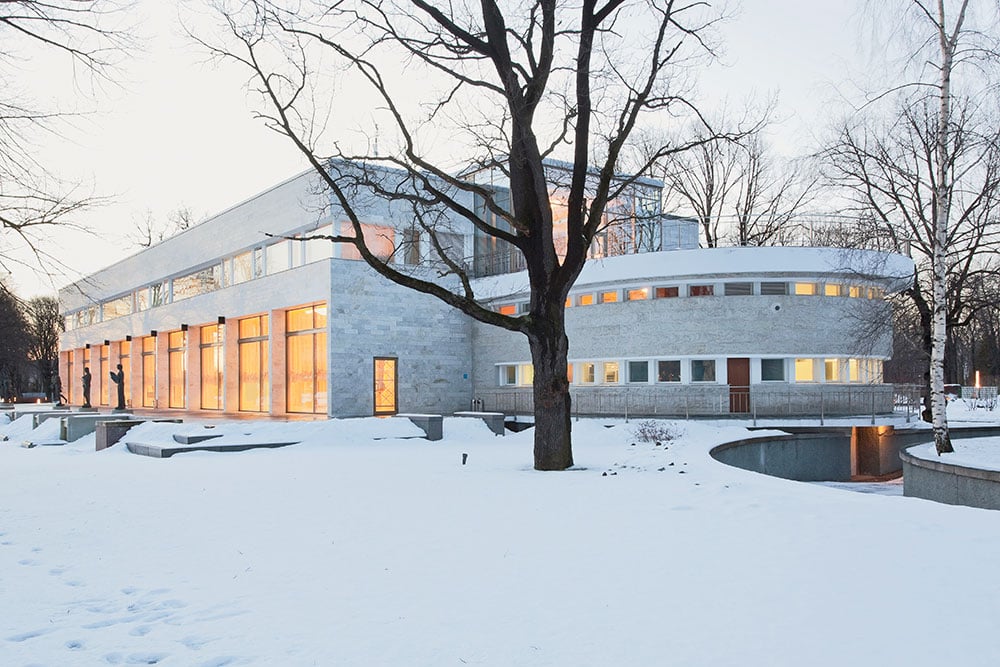Stage beauty: celebrating the magnificent Brutalism of Veliky Novgorod’s drama theatre
When the Dostoevsky Drama Theatre was built in Veliky Novgorod in the 1980s, it looked like nothing the city had ever seen before
“Ugly”, “surrealist”, “cosmic”, “out of this world” — this is how people usually describe the Dostoevsky Novgorod Academic Drama Theatre, a building sat on the embankment of the Volkhov River, a few kilometres away from the city’s old-world Kremlin. Veliky Novgorod is considered to be the “cradle of Russia”. The city celebrated its 1,150th birthday in 2009 and continues to attract tourists who come to see its Old Russian church architecture and postcard silhouette of the Kremlin — red brick walls and canopied towers framed with parapets.
The architect’s strategy for the construction process was to show as little as possible to the Ministry of Culture
Almost all of Novgorod’s inhabitants older than 35 either would have witnessed or even taken part in the construction of the drama theatre. Protracted developments on the site lasted for almost two decades from the beginning of the 1970s to the late 80s, and have become an integral part of local memory. However, behind its obvious strangeness, the Novgorod theatre is indelibly rooted in the surrounding landscape.
The building was designed in such a way as to be invisible from the main lookouts of the historic city; it leaves the historic centre whole while offering a radical contrast to it. Being intriguingly dominant, it stretches alone on an empty plot of land. The theatre has numerous facades; one resembles the white arches of Novgorod’s Orthodox churches; another overlooks the river with five-storey high windows.
Particularly in the central areas of the USSR, post-Stalinist architecture was standardised, choked by a planned economy and five-year plans. However, in the late Soviet era architectural experiments were resumed with renewed vigour; the projects of foreign architects and the constructivist experiments of the 1920s were granted the opportunity to move from the pages of magazines to life. They were taking shape, offering their own version of the postmodern. Like a seismograph, buildings that witnessed the collapse of the Soviet system recorded the psychological, moral and social upheaval of the time.
In the late 1960s, when the design of the theatre commenced, Novgorod was a large industrial centre with a huge radio-electronic factory attracting new inhabitants. Thus, the project of the theatre occurred at a time when the population of Veliky Novgorod reached 200,000. According to government rules, a city of that size was to have appropriate culture that would fit the needs of the people.
The main architectural and technical concept for the project was entrusted to the architect Vladimir Somov, a member of Giproteatr, the state organisation responsible for planning cultural and entertainment centres throughout the Soviet Union and beyond. On the other hand, Somov was also a member of the underground Belutin art studio. A legendary figure, Ely Belutin was an outstanding experimenter, whose work angered Nikita Khrushchev at the famous exhibition XXX years of the Moscow Organisation of the Union of Soviet Artists at Moscow’s Manege gallery in 1962. Somov himself witnessed and even took part in the exhibition. It was the incident that led to the complete ban of abstract art in the Soviet Union.
Consequently, this scandal became the catalyst for the birth of a critical, semi-clandestine Soviet non-conformism. As a secret avant-garde painter, Somov was not an ordinary architect from a state construction company. Rather, he managed to escape with his architecture and transcend the political agenda. In fact, the Novgorod theatre is primarily a monument to the individual vision of one man — Somov, who managed to realise his personal belief that reality can be described only in symbolic forms.
The symbol of Novgorod’s future development — the theatre — has been turned into a monument, one either to an unfinished dream or a shadow of a state that no longer exists
As the writer of the film Novgorod Spaceship, Andrey Rozen, pointed out, Somov’s strategy for the construction process was to show as little as possible to the Ministry of Culture during the negotiation phase of the project. In fact, the architect passed a draft to the Ministry which actually spoke of developing a slightly different project at the construction site.
For several years, Somov experimented with different designs for the hall. As a result, the architect developed a unique, three-part scene especially for the Novgorod theatre that could easily change in several different ways. While developing the external architecture of the building, Somov sought to design something that captured the imagination of the onlooker even before the show commenced. He developed a model of a decorative plate which covered the area around the theatre. Similar plates were also used for the construction of 40 metres of steel that was demolished in 2008 after a number of suicide attempts.
Round plates of mysterious forms were repeated in the design of the ceiling in the interior of the building. Huge multilevel theatre halls are fully tiled with marble. On the top floor of the building there was supposed to be a theatre cafe with a view over the entire city. In the 1990s the space was given over to a casino before becoming a billiards club.
“I hope that I’ll be able to restore everything to as it should be,” the new theatre director, Vsevolod Tchubenko, said as we walk through the building a few hours before the show. “I am very sorry for this huge unused space. There are these empty stairs and passages, but the former cafe on the top is now under restoration. Due to the fact that the lobby is huge, people who come to our performances feel uncomfortable and freeze in winter. We spend millions of rubles a year on heating theatre audiences alone.”
After the collapse of the Soviet Union and the closure of large-scale production in Novgorod, the city’s population began to decrease, contrary to the forecasts that precipitated the construction of the theatre. A large building became a burden for the budget of a small country town. While being nostalgic for the past greatness of the project, Tchubenko recognises the great difficulty involved in dealing with the decaying building today. The symbol of Novgorod’s future development has been turned into a monument, one either to an unfinished dream or a shadow of a state that no longer exists.
